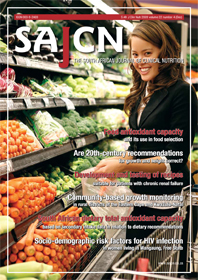Socio-demographic risk factors for Hiv infection in women living in Mangaung, Free State
Keywords:
South Africa, HIV, black women, socio-demographic status
Abstract
Objective: To determine socio-demographic risk factors associated with HIV infection in women in Mangaung. Design and setting: A cross-sectional study was conducted in Mangaung, Bloemfontein. Subjects and methods: A representative group of 500 black women (25–44 years) was randomly selected to participate. Socio-demographic data were determined with a structured questionnaire and compared between HIV-infected and HIV-uninfected women. Results: After screening for eligibility, 488 women qualified. Sixty-one per cent of the younger women (25–34 years) and 38% of the older women (35–44 years) were HIV infected. It is possible that healthy women would be more likely to be working and were not included. HIV-infected women had been living significantly longer in urban areas (p = 0.0001 for both age groups) than HIV-uninfected women. Significantly more HIV-infected younger women than their HIV-uninfected counterparts snuffed tobacco (p = 0.002). Significantly more HIV-uninfected older women than HIV-infected older women were married or traditionally married (p = 0.010). Significantly more HIV-uninfected (p = 0.012 for younger and p = 0.002 for older) women than HIV-infected women reported a husband-headed household. Significantly more of the HIV-uninfected older women (p = 0.018) than the HIV-infected older women had no formal schooling or only primary school education. Unemployment ranged between 64.7 and 78.3%. Median room density between HIV-infected and HIV-uninfected women did not differ significantly. Conclusions: Unemployment and low levels of education were commonly reported. A self-headed household, urbanisation and being unmarried appeared to be possible risk factors for HIV infection.
Published
2009-08-22
How to Cite
Hattingh, Z., Walsh, C., & Joubert, G. (2009). Socio-demographic risk factors for Hiv infection in women living in Mangaung, Free State. South African Journal of Clinical Nutrition, 22(4), 203-207. Retrieved from http://sajcn.redbricklibrary.com/index.php/SAJCN/article/view/328
Issue
Section
Original Research
Material submitted for publication in the South African Journal of Clinical Nutrition (SAJCN) is accepted provided it has not been published elsewhere. Copyright forms will be sent with acknowledgement of receipt and the SAJCN reserves copyright of the material published.
The SAJCN does not hold itself responsible for statements made by the authors.


